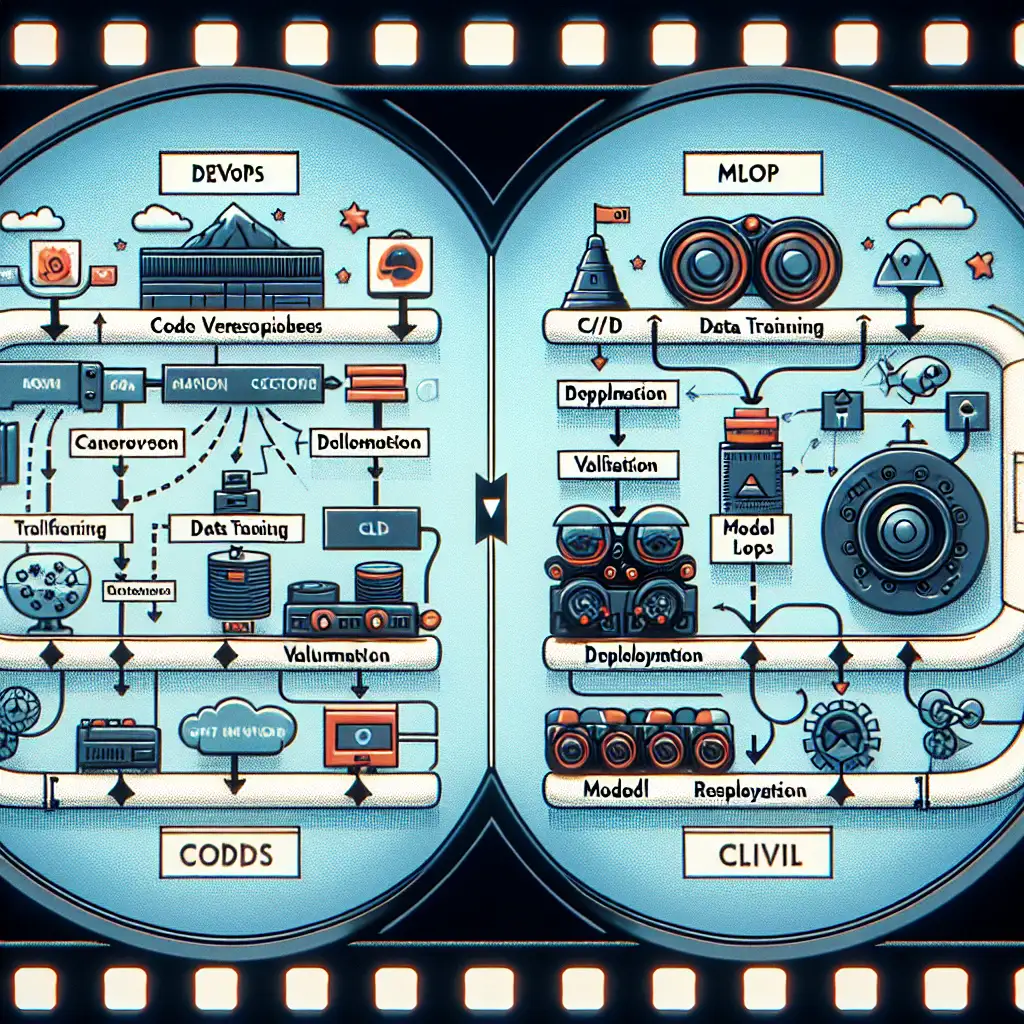Bridging the Gap: DevOps to Real MLOps
DevOps has transformed software delivery, but the same workflows often break down in machine learning. MLOps isn’t a buzzword—it’s a necessity, especially when model quality, reproducibility, and data traceability directly affect business outcomes. Below: how typical DevOps falls short for ML, and what to change if repeatable, scalable, and observable AI is your goal.
Where Classic DevOps Pipelines Miss the Mark
Consider a scenario: a team reuses their standard CI/CD pipeline for deploying a TensorFlow model (e.g., Jenkins to build, then simple Bash scripts for deployment). Everything appears to work—until a production model silently loses accuracy after a week. Post-mortem reveals:
- The “same” model artifact was trained on a subtly different slice of data due to an untracked S3 bucket update.
- No record of which preprocessing script version was used (“Did you commit the changes to
feature_tools.pybefore the last run?”). - Rollback is impossible: can’t recover the training set or environment from two weeks ago.
The root issues stem from these facts:
- Data is a first-class artifact. Code is static; most ML input is dynamic, mutable, and poorly tracked by default.
- Non-determinism. Even with fixed seeds, you may encounter run-to-run variation from CUDA version mismatches or OS library updates.
- Validation ambiguity. “Passed tests” don’t guarantee a model generalizes—unit tests on data pipelines aren’t enough.
Traditional DevOps’ assumptions (immutable builds, deterministic outputs, simple rollback) don’t hold for ML workflows.
Practical MLOps Patterns and Tooling
- Data and Model Versioning Must Be Rigorous
Expect datasets to mutate. Rely on tools designed for the job:
dvc==2.60.0(Data Version Control): links dataset versions directly to specific Git commits.- LakeFS (
>=1.2.0): provides branching/committing semantics for object stores. - Choose storage backends that minimize eventual consistency headaches (notably, S3 can introduce race conditions if misconfigured).
Sample commit process:
dvc add data/raw/2024-05-new-images.csv
dvc add models/resnet50_v3.pth
git add data/.gitignore models/.gitignore .dvc/
git commit -m "Track training set (May 2024) and ResNet baseline"
dvc push
Note: DVC push latency scales linearly with file size—split your datasets into logical chunks where possible.
- Automate Model Training and Evaluation (Pipelines, Not Ad Hoc Scripts)
Kubeflow Pipelines (v1.8.0), Airflow with ML-specific operators (e.g., astro-mlflow), or MLflow Projects (mlflow>=2.2.0).
Barebones Jenkins jobs miss critical stages (feature validation, bias checks, automated rescoring). Here’s a typical image classification pipeline (simplified):
+----------+ +----------------+
| Raw Data | -----> | Data Validation|-----+
+----------+ +----------------+ |
v
+------------------+
| Feature Pipeline |
+------------------+
|
v
+-------------------+
| Model Training |
| (e.g. PyTorch) |
+-------------------+
|
v
+-------------------+
| Model Evaluation |
+-------------------+
|
Performance > threshold?
/ \
v v
+------------+ +----------------+
| Deploy | | Alert & Rework |
+------------+ +----------------+
Gotcha: Orchestration frameworks (especially when running on Kubernetes) may leak GPU memory if step containers fail ungracefully—confirm cleanup with nvidia-smi in teardown steps.
- Reproducibility Across Environments
You must eliminate “works on my machine” issues. Minimum requirements:
- Pin all environments with
conda env exportorpoetry export. - Explicit Dockerfiles specifying exact Python base images (e.g.,
python:3.10.12-slim-bullseye). - Store hardware details (CUDA, cuDNN versions, GPU archetypes).
- Use experiment tracking systems like MLflow Tracking (
mlflow==2.2.0), which persist not just metric logs and artifacts but also every parameter/config.
Sample Dockerfile block (NVIDIA GPU):
FROM nvidia/cuda:12.1.0-cudnn8-devel-ubuntu22.04
RUN apt-get update && apt-get install -y python3.10 python3-pip
COPY environment.yml .
RUN pip install conda && conda env create -f environment.yml
ENV CONDA_DEFAULT_ENV=mlops-env
Tip: Run conda list --explicit > env-lock.txt at model sign-off for true dependency freeze.
- Production Monitoring: Beyond “Is the API Up?”
Watching CPU and memory gets you 10% of the way. Instrument deployed models for:
- Input data drift (compare live feature distributions vs training profiles; e.g., Kolmogorov–Smirnov test results).
- Prediction confidence metrics, monitoring for “unknown” class prevalence spikes.
- End-to-end request traces with latency/variance breakdown (Zipkin, Jaeger), especially for batch inferencing.
Sample drift log excerpt:
2024-05-03T16:32:41Z WARNING: Feature `color_histogram[3]` D-stat=0.34 (p=0.001) exceeds alert threshold for 12 hours.
2024-05-03T16:32:41Z Model `resnet50_v3` live accuracy drop detected: 0.92 -> 0.79 (N=20K samples)
Known issue: statistical drift monitors are sensitive to batch size; tune thresholds per business SLA.
Case-in-Point
One team migrated their ML image classifier pipeline from ad hoc shell scripts to a DVC + MLflow + Kubeflow Pipelines stack. Major improvements:
- Rollback to any prior model/data/environment as a single-line DVC checkout.
- Weekly auto-retraining triggered via Airflow DAG when new raw S3 data lands.
- All containers (
docker.io/organization/mlops-base:2024.05) rebuilt from sameconda env-lock.txton both dev laptops and the cluster.
Downside: Initial setup (especially integrating MLflow artifact storage with S3 IAM roles and DVC remote) burned two weeks—a tradeoff for auditability.
Notable Detail
No pipeline survives first business contact. Keep backfills, emergency data patching scripts, and manual override workflows under source control. Whether you like it or not, someone will hot-fix a dataset. Make it traceable.
Summing Up
Effective MLOps extends (not replaces) core DevOps: integrate robust data/model versioning, automate multi-stage build/training/evaluate pipelines, enforce strict reproducibility, and track model health beyond infrastructure metrics. Treat infrastructure, model, and data lineage as a single, auditable chain.
Side note: some teams succeed with homegrown Bash plus Makefile flows, but this almost always breaks down at scale.
Anyone still fighting with notebook-to-prod chaos? Specific pain points—especially around S3 permission snafus or pipeline step idempotency—are worth dissecting further.
